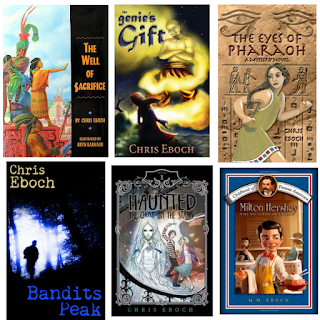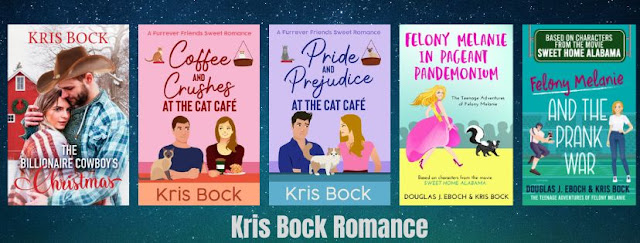An orphan explores his magical powers at a school for wizards. Twins discover they are really genies. Death narrates a World War II story. The young descendants of Sherlock Holmes tackle one of his unsolved cases.
A hook—in this case the “high concept” idea—can grab the reader’s attention and make a book stand out. Here are the books with the above hooks.
Harry Potter series, by J. K Rowling
Children of the Lamp series, by P. B. Kerr
The Book Thief, by Markus Zusak.
The 100-Year-Old Secret, by Tracy Barrett
Do you need a hook? Well, in today’s competitive market, it can definitely help. It’s a quick way to summarize your idea for an editor or agent, handy for writing conferences. So how do you figure out what yours is—or if you have one?
One option is comparisons—I So Don’t Do Mysteries was described as Nancy Drew with a Devil Meets Prada makeover by the publisher sales team trying to sell the book to bookstores and libraries. After Die Hard, action movies were often described as “Die Hard on a plane” or “Die Hard on a boat.”
On the jacket flap, books often used an “except” or “but” twist. The second part is the twist on a common plot. — A woman thinks her ex-husband is going to try to kill her, but he kidnaps her daughter instead.
If your book isn’t trendy, don’t despair. What hooks the reader is individual to that reader. Some may read any book set in a certain time or place, or love talking animals. Don’t try to make your book sound like it fits some hot trend, if it doesn’t. Instead try to hook your readers. Who are your target readers, and what will draw them to this book?
A good hook is simple and short—sometimes it’s referred to as a one-sentence synopsis or an elevator pitch (from the idea that you might have 30 seconds in an elevator to grab an editor’s attention). It’s not long-winded, where you are trying to cram everything into one run-on sentence. The hook doesn’t necessarily tell you the plot, but it gives you the flavor of the book and arouses interest. It may be simply the premise.
For example: In The
Accidental Detective humorous mystery series, a witty
journalist solves mysteries in Arizona and tackles the challenges of turning
fifty. This sentence identifies the MC as a journalist turning fifty, it says she'll solve crimes, and it identifies the setting of Arizona. "Witty" suggests this will be humorous (as does calling the series a "humorous mystery series").
There is no specific plot in that series pitch. Here's the pitch for Book 1, Something Shady at Sunshine Haven:
When patients are
dying at an Alzheimer’s unit, a former war correspondent must use her
journalism skills to uncover the killer and save her mother.
That sentence identifies the MC and her challenge, with high stakes, since her mother is one of the people in danger.
You can find books similar to yours on Amazon, Goodreads etc. and look at the first sentence of the book description, which may be in bold or italics. This is often a good hook. For example:
 Fatima Tate Takes the Cake, by Khadijah VanBrakle:
Fatima Tate Takes the Cake, by Khadijah VanBrakle:
Fatima Tate wants to be a baker AND enjoy some innocent flirting with her hot friend Raheem—but her strict Muslim parents would never approve of either.
Bunnybirds #1, by Natalie Linn:
Princess Aster must leave home to discover why her people are disappearing—even if it means journeying over the rim of the world itself—in this animal fantasy graphic novel perfect for fans of blockbuster series like Warriors and Wings of Fire.
This works for picture books too.
 Too Much: My Great Big Native Family, by Laurel Goodluck, illustrated by Bridget George:
Too Much: My Great Big Native Family, by Laurel Goodluck, illustrated by Bridget George:
A little boy wants a chance to shine on his own but discovers that being apart from his large and lively Native family isn’t necessarily better in this heartwarming and humorous picture book.
(Note that it can be risky to compliment your own work in a query. I might call my own book humorous, but I wouldn't claim it's "laugh out loud funny." Leave the big praise for marketing.)
EXERCISE: For practice, name a favorite or recent book—how would you describe it to a friend? Would you pick it up if you heard that description? Then check the opening of its marketing description. Is that a good hook? Why or why not? Try this a few times.
EXCERCISE: Write a simple synopsis of your work. Don’t worry about length or clarity. Jot down the who, what, when, where, and why. Now you have some idea of the most interesting and important aspects of the work. Turn it into a one-sentence synopsis with your hook.
To start focusing on your hook, ask, What is the conflict, in terms of X versus Y? Once you have your hook, you can expand upon that one-sentence pitch for a query letter or longer conversation. (Please note that it's better to have two or even three short, snappy sentences than one very long sentence where you try to cram in everything. A good hook is one you can remember and share verbally fairly easily, without worrying about getting exactly the right word in the right place.)
More examples:
In The Well of Sacrifice, a Mayan girl in ninth-century Guatemala rebels against the High Priest who sacrifices anyone challenging his power. The Genie’s Gift: Shy, thirteen-year-old Anise resolves to find the Genie Shakayak and claim the Gift of Sweet Speech, but the journey is full of challenges, both ordinary and magical. The Eyes of Pharaoh: When their friend disappears, Seshta and Horus spy on merchants, soldiers, and royalty,
and start to suspect even The Eyes of Pharaoh, the powerful head of the secret
police.
Coffee and Crushes at the Cat Café: Kari doesn’t
have time for love when she’s opening her new cat café. But when a sexy
master baker walks in, how can she resist?
The Billionaire Cowboy’s Christmas: Carly has crushed on Josh for years, but when he wins a
fortune in the lottery, how can she prove she wants him for himself?
The
Teenage Adventures of Felony Melanie: Meet teen “Felony Melanie” years before the movie Sweet
Home Alabama and follow the crazy antics of Melanie, Jake, and their
friends as teens in this fun-filled romantic comedy series. (This one is more vague, because it relies on the movie as the hook for the series. FYI, I cowrote this series with my brother who wrote the original screenplay for the movie, which is why we were legally able to do this.) More advice on writing a pitch:
How to Write a
Book Pitch (and Why it Matters) at The Novelry.
How
to write a killer one sentence pitch (or logline) for novels and memoirs, by
Nathan Bransford
How
to Pitch a Book – Your Guide to Writing the Perfect Book Pitch, by Alyssa
Matesic
Chris offers online, on-demand courses (start whenever you want and work at
your own pace)
Advanced Plotting—Keep Those Pages Turning: Learn
advanced techniques that will make a decent plot dynamic. Take this online
course at your own pace. It includes six videos plus handouts with notes and
more resources for $100. Get
Advanced Plotting here. You Can Write for Children:
Learn about children’s publishing—opportunities and challenges, genres, age
ranges, book and magazine markets, and resources to keep you going. Watch this
three-session video course at your own pace. It's five chapters for $60. Get You
Can Write for Children here.
Educational Publishing: Make Money Writing for the
Educational Market: Do you want to make money from writing? Are you
willing and able to write on assignment if given a topic, word count, grade
level, and deadline? Then you may be perfect for educational work for
hire! 7 chapters, 14 lessons, $150 or the $350 subscription option
lets you send your work to me for feedback. Get the Ed Pub course here.
The Ten-Minute
Writer offers short videos to help writers improve
their craft quickly. See videos on The Promise of the First Chapter, Fast
Starts, Characters in Conflict, Secondary Characters, Villains, and a quick
peek at Cliffhangers.
Chris
Eboch is the author of over 100 books for children, including nonfiction and
fiction, early reader through teen. Her novels for ages nine and up
include The Eyes of Pharaoh, a mystery in ancient Egypt; The
Well of Sacrifice, a Mayan adventure used in many schools; and The
Genie’s Gift, a middle eastern fantasy. Her writing craft books
include You
Can Write for Children: How to Write Great Stories, Articles, and Books for
Kids and Teenagers, and Advanced
Plotting. Learn more at chriseboch.com.
Chris writes mystery and romance for adults as Kris Bock. Learn more at KrisBock.com. In the
Accidental Detective series, a witty journalist
solves mysteries in Arizona and tackles the challenges of turning fifty. The
Furrever Friends Sweet Romance series features the employees and customers at a cat café. In the Accidental
Billionaire Cowboys series, a Texas ranching
family wins a fortune in the lottery, which causes as many problems as it
solves. Sign
up for the Kris Bock Mystery and Romance newsletter and get a free Accidental Detective short story and bonus material, a
free 30-page sweet romance set in the world of the Furrever Friends cat café,
and a printable copy of the recipes mentioned in the cat café novels.




























.jpg)















